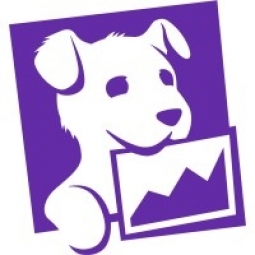Customer Company Size
Large Corporate
Region
- America
Country
- United States
Product
- Datadog
- Chofer
- Amazon EC2
- Amazon RDS
- Amazon EKS
Tech Stack
- AWS
- Backstage
Implementation Scale
- Enterprise-wide Deployment
Impact Metrics
- Cost Savings
- Productivity Improvements
- Digital Expertise
Technology Category
- Infrastructure as a Service (IaaS) - Cloud Computing
- Platform as a Service (PaaS) - Application Development Platforms
Applicable Industries
- Automotive
Applicable Functions
- Discrete Manufacturing
- Product Research & Development
Services
- Cloud Planning, Design & Implementation Services
- Data Science Services
About The Customer
Toyota (NYSE:TM) has been a part of the cultural fabric in the US for more than 65 years, and is committed to advancing sustainable, next-generation mobility through its Toyota and Lexus brands, plus nearly 1,500 dealerships. Toyota Motor North America (TMNA) is the operating subsidiary of the Toyota Motor Corporation in the United States, Canada, Mexico, and Puerto Rico. TMNA works to create high-quality vehicles and find innovative ways to advance society with cutting-edge automotive technology. TMNA began using Amazon Web Services (AWS) in 2015. As it did so, it also wanted to simplify and standardize application development in the cloud and improve time to market. In response, Kishore Jonnalagedda, director of engineering, led the TMNA cloud platform team in building an internal, self-service development platform called Chofer using Backstage running on AWS.
The Challenge
Toyota Motor North America (TMNA) began using Amazon Web Services (AWS) in 2015 to simplify and standardize application development in the cloud and improve time to market. However, the team lacked a consistent monitoring tool, which created reliability concerns. Some developers used open source tools, others used log management tools, and some didn't use anything. As a result, team members often spent multiple hours trying to get to the bottom of an outage because they didn’t know what to look for or where. With 1,600 total applications (300 in the cloud) and more than 100 teams, that was a challenging task. On top of gaining unified visibility, the cloud platform team also sought to improve mean time to detection (MTTD) and ensure they could meet SLAs for 99.9 percent uptime while simultaneously reducing costs and helping engineers become more efficient.
The Solution
Jonnalagedda and his team began looking for an observability solution that could provide full visibility into the health and performance of each layer of TMNA’s environment at a glance, in a single pane of glass. Ultimately, TMNA achieved that by ingesting data from its AWS services into Datadog. It can now maintain visibility into its cloud-hosted apps running on Amazon EC2, Amazon RDS, Amazon EKS, and others, all in one place. Toyota also needed to monitor different parts of its tech stack. Datadog gave Toyota the visibility it needed with its 600+ integrations with key technologies, including support and out-of-the-box dashboards for over 100 AWS services. Datadog’s dashboards helped TMNA develop applications with more transparency, bringing metrics and logs into one place—regardless of their source—and helping the team quickly gain context and troubleshoot problems faster. These visualizations were also an easy way for the organization to look at site reliability engineering practices, visualize service level objectives (SLOs), and manage AWS over-capacity.
Operational Impact
Quantitative Benefit

Case Study missing?
Start adding your own!
Register with your work email and create a new case study profile for your business.
Related Case Studies.

Case Study
Integral Plant Maintenance
Mercedes-Benz and his partner GAZ chose Siemens to be its maintenance partner at a new engine plant in Yaroslavl, Russia. The new plant offers a capacity to manufacture diesel engines for the Russian market, for locally produced Sprinter Classic. In addition to engines for the local market, the Yaroslavl plant will also produce spare parts. Mercedes-Benz Russia and his partner needed a service partner in order to ensure the operation of these lines in a maintenance partnership arrangement. The challenges included coordinating the entire maintenance management operation, in particular inspections, corrective and predictive maintenance activities, and the optimizing spare parts management. Siemens developed a customized maintenance solution that includes all electronic and mechanical maintenance activities (Integral Plant Maintenance).

Case Study
Monitoring of Pressure Pumps in Automotive Industry
A large German/American producer of auto parts uses high-pressure pumps to deburr machined parts as a part of its production and quality check process. They decided to monitor these pumps to make sure they work properly and that they can see any indications leading to a potential failure before it affects their process.











